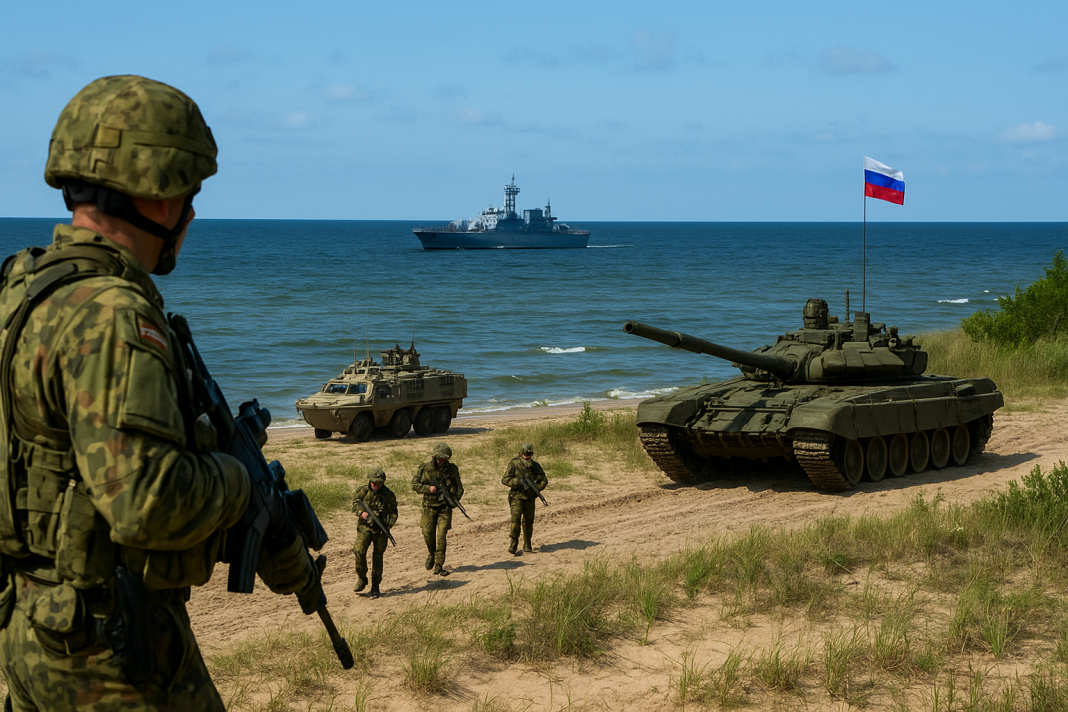In the Baltic region, two of the world’s biggest military powers are carrying out war games almost at the same time. NATO has launched one of its largest training programs, known as Quadriga 2025, across Germany, Lithuania, Finland, and the Baltic Sea. This set of NATO military drills involves around 8,000 troops from different allied nations.
Massive NATO Military Drills Across Europe and the Baltics
The purpose of Quadriga 2025 is to prepare soldiers for situations of crisis or conflict. During the drills, troops are practicing a wide range of skills. These include clearing mines from land and sea routes, defending against enemy drones, and responding to threats that may come from the air, land, or water. The NATO military drills are designed to test how quickly forces can react and how well they can coordinate with one another in real situations.
For countries in the Baltic region, these drills are not just routine. They take on added importance because of geography. Lithuania, one of the participating NATO members, shares a border with Belarus, a country that is closely allied with Russia. This location makes the NATO military drills in this area more sensitive and closely observed.
🪖 Belarus-Russia war games ignite NATO’s largest Eastern Europe military surge since the Cold War
The drills also demonstrate the ability of NATO troops to work together under one command. Each country provides different strengths, whether in technology, manpower, or equipment. Exercises like Quadriga 2025 ensure that these resources can be combined effectively in case of a threat.
Russia and Belarus Respond With Their Own Drills
While NATO continues with its series of NATO military drills, Russia and Belarus are launching their own large-scale exercise known as Zapad 2025. These drills are taking place just across the Lithuanian border and also inside Russian territory. Around 13,000 troops will take part in Belarus, while another 30,000 will join activities inside Russia.
Russia has included the Zapad exercises in its military calendar for many years. The last Zapad drill took place in 2021 and ranked among the biggest in decades. At that time, Russia mobilized nearly 200,000 troops across a vast area. That exercise happened only months before Russia launched its full-scale invasion of Ukraine in February 2022, which is why observers are watching the current drills so closely.
Death of ethnic Hungarian in Ukraine ignites sanctions battle — EU and NATO under pressure
Zapad 2025 will stretch across a wide geographical zone. The exercises will cover locations from the Arctic, down through Belarus, and into Kaliningrad, the Russian enclave situated between Poland and Lithuania on the Baltic Sea. This wide area makes NATO members in the region observe the exercise closely.
The activities usually feature a variety of military actions. Troops move tanks and armored vehicles in formation, fighter aircraft conduct flights, naval ships patrol waters, and missile systems undergo testing. These drills simulate large-scale military operations, including both defensive and offensive maneuvers.
Overlapping NATO Military Drills and Zapad Exercises
The fact that NATO and Russian-led forces are holding exercises almost at the same time and in the same region has added an extra layer of tension. Their training grounds are close to one another, which naturally raises the risk of misunderstandings or accidental encounters. Even though both sides describe their actions as defensive, the overlap between NATO military drills and Russian-Belarusian operations attracts global attention.
Lithuania has taken additional steps to prepare for the Russian and Belarusian drills. Authorities have closed parts of the country’s airspace near the Belarusian border. This allows defense systems to monitor the area more closely and act against any aircraft or drones that might stray into restricted zones. Such steps are precautionary to prevent accidental violations during the busy period of military activity.
Large-scale drills like these are significant not only because of the numbers involved but also because of the military hardware on display. Troops, tanks, aircraft, ships, and advanced weapons pack into a relatively small region. NATO military drills, together with Russia’s Zapad 2025, show some of the most visible demonstrations of power in Europe this year.
⚔️ Austria on the brink — temptation to join NATO rises as Russian threats loom
The overlap reminds many observers of past experiences. In 2021, the last Zapad exercise took place and major developments in the region followed only months later. Officials describe the current drills as routine, but the memory of earlier events makes the situation in the Baltics more sensitive.
Both NATO’s Quadriga 2025 and Russia’s Zapad 2025 stand out as large-scale shows of military readiness. With tens of thousands of troops, advanced weapon systems, and extensive geographic coverage, the Baltic region has once again become the stage for a closely watched military standoff between two powerful blocs.

